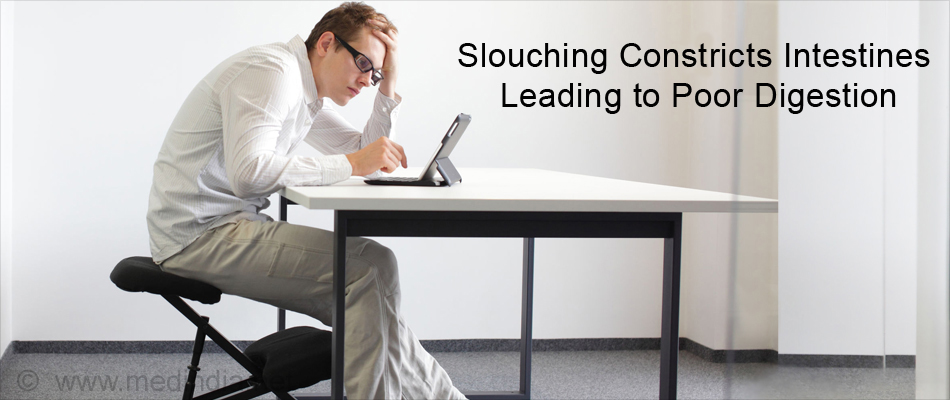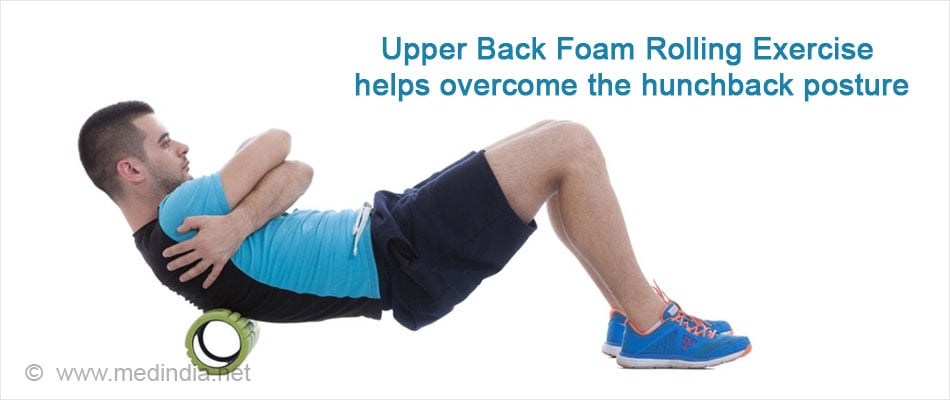- Back Pain Facts and Statistics - (https://www.acatoday.org/patients/health-wellness-information/back-pain-facts-and-statistics)
- Poor Posture: A Social, Industrial, and Medical Problem - (https://www.ncbi.nlm.nih.gov/pmc/articles/pmc1824033/)
- The effect of body posture on cognitive performance: a question of sleep quality - (https://www.ncbi.nlm.nih.gov/pmc/articles/pmc3973903/)
- The effect of smartphone usage time on posture and respiratory function - (https://www.ncbi.nlm.nih.gov/pmc/articles/pmc4756000/)
- Respiratory dysfunction in chronic neck pain patients. A pilot study. - (https://www.ncbi.nlm.nih.gov/pubmed/19187335)
- Influence of body posture on intestinal transit of gas - (https://www.ncbi.nlm.nih.gov/pmc/articles/pmc1773697/)
- Effect of postprandial posture on digestion and absorption of dietary carbohydrate. - (https://www.ncbi.nlm.nih.gov/pubmed/11938608)
- Comparison of Postures According to Sitting Time with the Leg Crossed - (https://www.ncbi.nlm.nih.gov/pmc/articles/pmc4242947)
- Effect of an exercise program for posture correction on musculoskeletal pain - (https://www.ncbi.nlm.nih.gov/pmc/articles/pmc4499985/)
What is a Posture?
"A good stance and posture reflect a proper state of mind". - Morihei Ueshiba- A martial artist
Posture refers to the way an individual holds the body or the alignment of spine with all its adjoining structures. It includes every single movement that a person makes i.e. when a person moves to a vertical position: from sitting to standing or from lying down to sitting or standing straight. But, when the spine of a person is not in a natural position it is called postural dysfunction or bad posture.
What is Bad Posture?
Bad posture is the posture that results out of any habitual positioning causing unnecessary strain on the body. It may be caused due to muscle tightening or lengthening resulting from one’s daily activities. It is very common nowadays and can be associated to social, industrial and medical attributes as well. It is estimated that 80% of the population may experience a back problem at some point of time in their lives. It can be an outcome of many sources; however bad posture risks increase with following activities:
- Slouching in a chair
- Improper positioning while sitting using computers and phones
- Standing with a flat back
- Performing long hours of repetitive movement
- Carrying extremely heavy backpacks, schoolbags and briefcases
- Leaning on one leg
- Regular stress or anxiousness
- Rounded shoulders
- Weight lifting
- Excessive weight around the stomach and pregnancy
- Wearing high heels
What are the Effects of Bad Posture?
There are numerous health risks associated with poor posture. Although, the problem of bad posture is generally minor and self limiting, it can have worse repercussions and long term effects on the body. Effects of bad posture may include headaches, weakened muscles, hindered circulation, and pain in back, neck, chest and shoulders.
Effect on Cognitive Performance
Studies reveal that there is a beneficial effect of an upright posture on cognitive performance. When a person is in an upright posture, there is decreased baroreceptor firing that leads to elevated arousal. On the other hand, supine posture is associated with decreased arousal activity or increase in the sleeping factor. Also, detection of auditory stimuli and peri-threshold odors are observed to improve in an upright compared to the supine position.
Effect on Digestion
Sitting for longer periods can lead to digestive distress. Even in case of slouching, it constricts intestines which can be attributed to poor digestion and acid reflux. Findings suggest that postprandial supine position is preferable over sitting position for the digestion and absorption of dietary carbohydrate. In a study performed on 80 healthy individuals the results demonstrated that orocecal transit time of the test meal is significantly higher in sitting position compared to supine position (260 +/- 21 min and 238 +/- 20 min).

Effect on Respiratory Function
Prolonged use of smartphones is related to having negative impact on both posture and respiratory function, as revealed in a study. Prolonged smartphone usage results in faulty posture such as forward neck posture, slouched posture or rounded shoulders. And, chronic neck patients have been found to decrease maximal voluntary ventilation and respiratory muscle strength.

Effect on Joints
Present day lifestyle, workplaces, and the working time make the person to be more in a sedentary posture. Poor posture causes misalignment of spine causing joint stress, tissue degradation and pain. Joint imbalance limits the movement of the tendons and muscles and makes even a normal movement difficult. Another finding states that people sitting with their legs crossed have negative impact on their joints. This position alters weight bearing on soft tissues and muscles and the person could have raised blood pressure due to orthostatic hypotension.
Effect on Mood and Body Energy
Individuals with tendencies to slouch and slump can experience a cycle of chronic fatigue. Being seated for extended periods of time slows down all internal processes. Lack of physical activity decrease energy levels of body and even worsens depression and mood.
Effect on Neck, Back and Shoulders
Many people who maintain poor posture experience chronic back, neck and shoulder pain. Slouched position or keeping the shoulders and back curved (hunchback) can cause pain and muscle tension.
Effect on Blood Circulation
Bad posture can cause problems with blood vessel constriction. The constriction of the blood vessels around the spine hinders blood supply to the muscles affecting nutrient and oxygen supply. Poor circulation can also cause clot formation and cardiovascular issues.
Another effect is the formation of varicose veins.Sitting all day or standing in same position for long periods prevents the necessary circulation in body and leads to the formation of varicose veins.

Why is it Important to Have a Good Posture?
Good posture is not important just for maintaining a toned body shape, it is also necessary to maintain good working order for our joints, muscles, and vital organs. Good or correct posture involves a straight spine, or just maintaining the natural curve of the spine in the human body. By becoming aware of our daily life habits like the way we stand, sit, or move, we can fine-tune our body posture and improve our vital functions.
In words of Joseph H. Pilates- “Never slouch, as doing so compresses the lungs, overcrowds other vital organs, rounds the back, and throws you off balance."
The importance of correct posture should be emphasized, and especially maintaining correct sitting posture should be focused. If incorrect postures become a habit at an early age then individuals may adapt these postures only and it also makes them feel comfortable. But, these have bad effect on health and can cause strain on the spine, pelvis, muscles, tendons, joints, bones, and discs ultimately leading to fatigue and deformation.
Correct posture maintains balance of musculoskeletal system that supports other structures in the body. If a good posture is maintained it provides strength and flexibility to the body thus, maintaining overall body health.
Simple Exercises to Deal with Bad Posture
Improving one’s body posture can ultimately improve energy level and state of the body. Unfortunately, many people develop bad posture and also suffer from related chronic conditions. So, here are some simple exercises to deal with bad posture.
Exercise 1
Upper back foam rolling - This exercise is helpful in case of hunchback. Hunchback means a C shape is formed at the top of spinal column as a result of being seated for long hours. You can perform upper back foam rolling to increase the mobility of your upper back. For this you need to lie down on a foam roller placed in the middle of your back and perpendicular to the spine. Keep your face in upward position and hands behind your head and bend your upper back over the roller 4-5 times. You can repeat this for each segment of your upper back by adjusting the roller.

Exercise 2
Straightening shoulders and flanks- This can be performed while seated. Straighten your right hand and put your left hand on your waist then incline your body towards the left side while counting 1-4. Then return to the original position while counting another four. Perform the same action on the opposite side also.
Exercise 3
Lower muscle static strengthening exercise- Perform this exercise while seated. Bend both your knees and cross both ankles. Then push your ankles in opposite directions to create contact and maintain the posture for 10 seconds, and then relax.
Exercise 4
Calf stretching- For this exercise sit on the middle of the chair and stretch your left leg forward. Cross both hands while bending your upper body towards the big toe of your right foot. Repeat it 4-5 times.
Exercise 5
Pelvic tilt exercise- It is a condition where a person’s pelvis tilts forward, pushing his/her torso forward and bending the back in an odd position. So, perform this while being seated and with your back in contact with the back of the chair. Then, grab your shoulders with both hands crossed at your breast level and pull the shoulders. Spread your legs while sitting firmly on chair. Pull your jaw downwards and bend your head towards your breast. Inhale and then exhale through your mouth while looking down and bending your back, simultaneously stretching both elbows toward the pelvic joint. Maintain this posture for about 10 seconds and then return to the original position.








